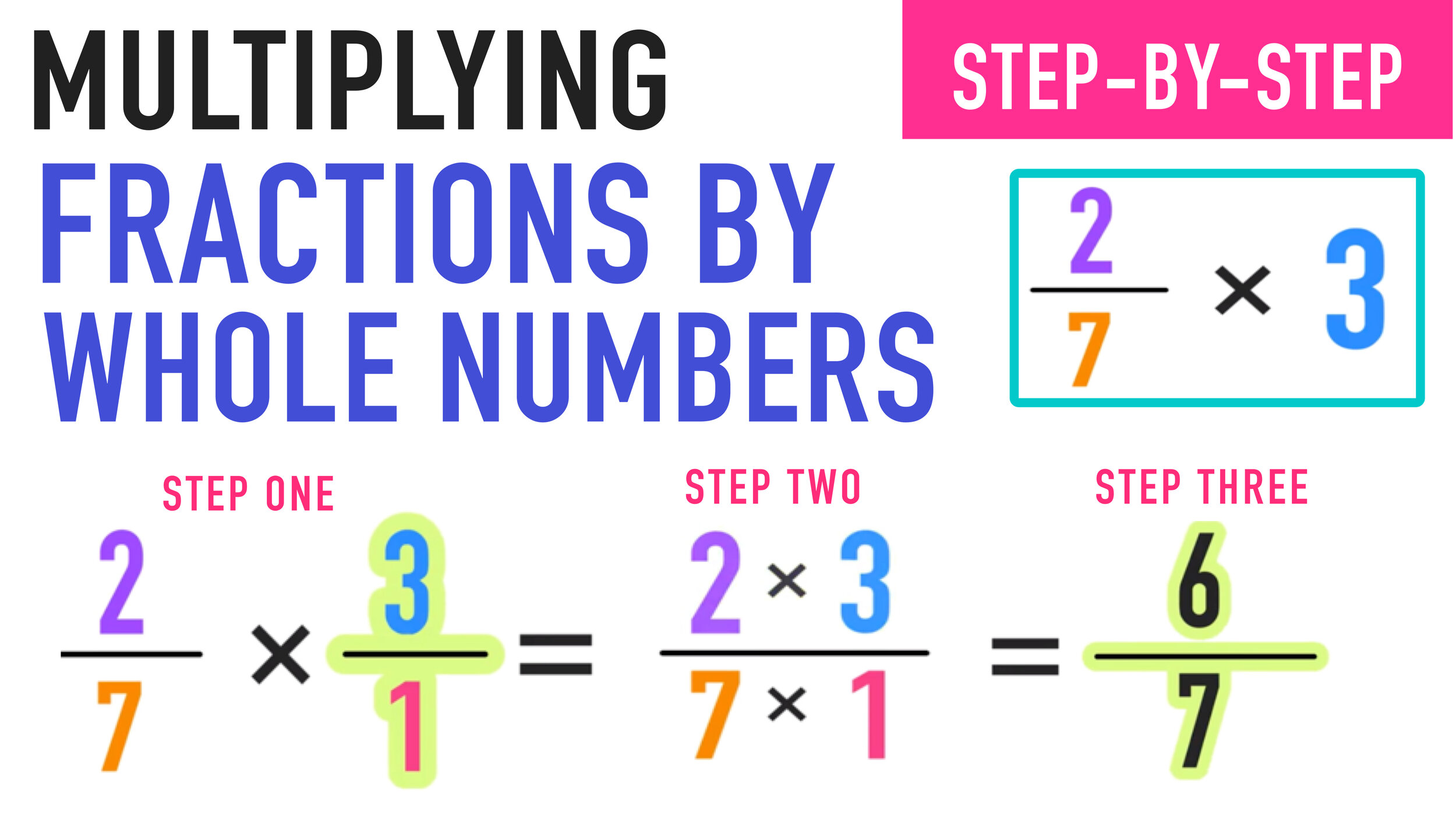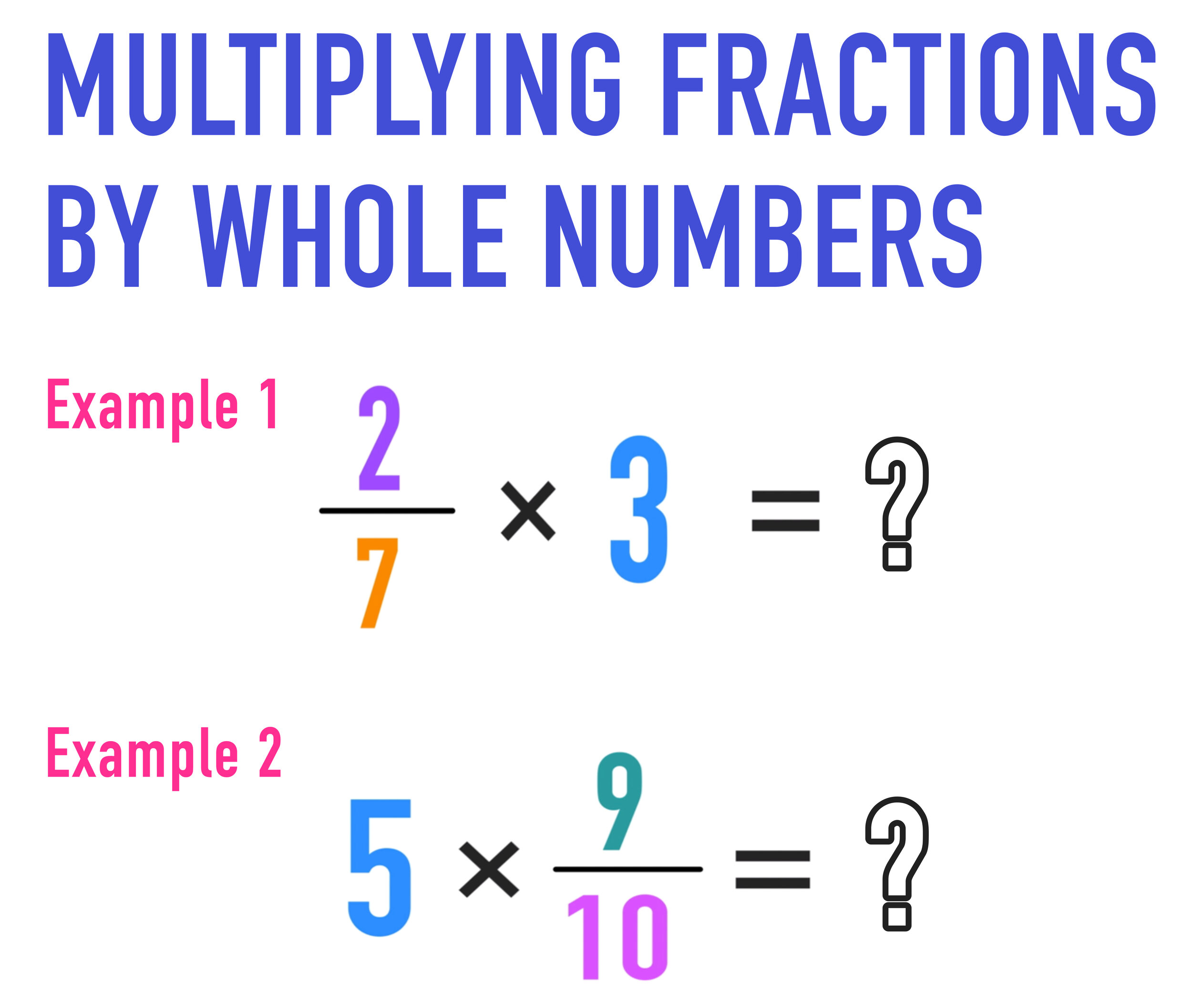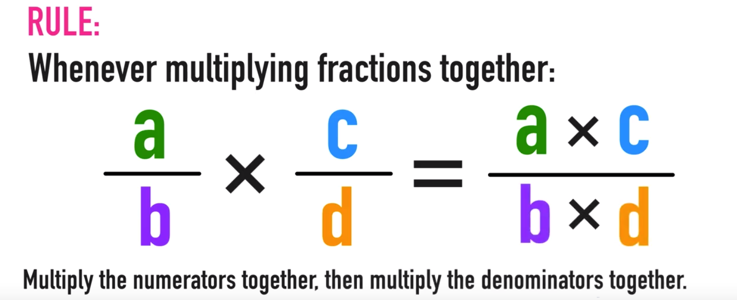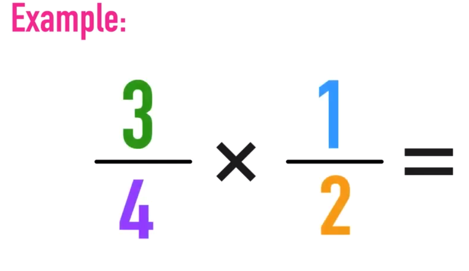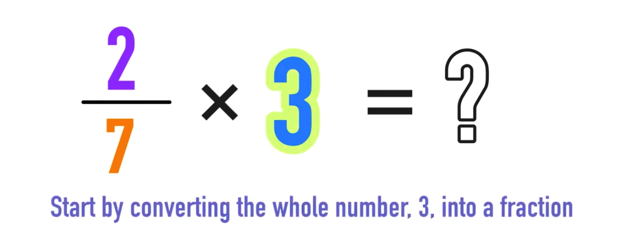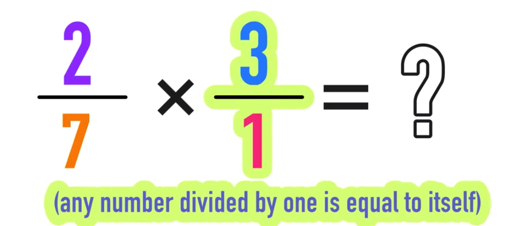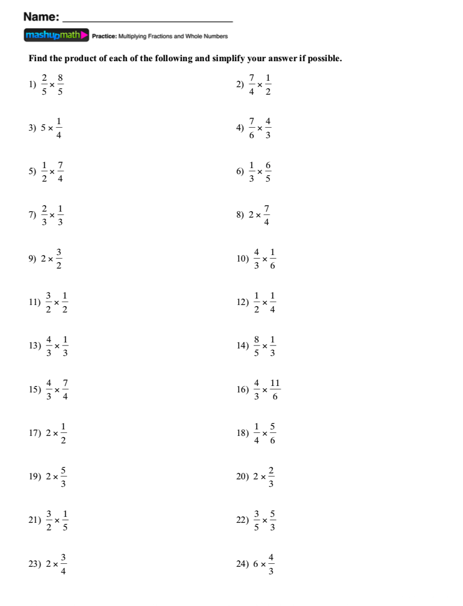Complete Guide: Multiplying Fractions by Whole Numbers
Key Question: How do you multiply fractions and whole numbers?
Learn how to solve these kinds of problems.
Welcome to this free lesson guide where you will learn and easy two-step process for multiplying fractions by whole numbers AND multiplying whole numbers by fractions.
This complete guide to multiplying fractions by whole numbers includes several examples, an animated video mini-lesson, and a free worksheet and answer key.
Let’s get started!
Multiplying Fractions by Whole Numbers: Multiplication Review
Before we explore how to multiply fractions, let’s do a super quick review of how to multiply a fraction by a fraction (understanding how to apply the rule below will make multiplying fractions and whole numbers much easier for you!)
Multiplying Fractions Rule: Whenever multiplying fractions together, multiply the numerators together, then multiply the denominators together as follows…
Example of the Rule:
What is (3/4) x (1/2) ?
Notice that the fraction (3/8) can not be simplified (since 8 and 3 do not have a common divisor)
Answer: (3/4) x (1/2) = 1/8
Looking for More Help With Multiplying a Fraction by a Fraction? Check out this free guide
How to Multiply a Fraction by a Whole Number (and Vice Versa)
Now that you are familiar with the rule for multiplying a fraction by a fraction, you can use it to help you easily multiply a fraction by a whole number.
Let’s start with an example:
Multiplying Fractions by Whole Numbers: Example 1
Example 1: What is (2/7) x 3 ?
Start by rewriting the whole number (3 in this example) as a fraction, (3/1) as follows…
(You can do this because any number divided by one is always equal to itself)
Now, because you are multiplying a fraction by a fraction, you can apply the rule and solve as follows…
And since (6/7) can not be simplified, you can conclude that:
Answer: (2/7) x 3 = (6/7)
Wait! What would happen if the answer could be simplified? Let’s address the situation in the next example…
Multiplying Fractions by Whole Numbers: Example 2
Example 1: What is 5 x (9/10) ?
Start by rewriting the whole number (5 in this example) as the fraction (5/1)…
Then apply the rule as follows…
In this example, (45/10) is not the final answer because it can be simplified.
Since the greatest common factor (GCF) of 45 and 10 is 5, you can simplify by dividing both the numerator and the denominator by 5 as follows…
And since (9/2) can not be simplified any further, you can conclude that:
Answer: 5 x (9/10) = (9/2)
Still confused? Check out the animated video lesson below:
Video: Multiplying Fractions by Whole Numbers Explained!
Check out the video lesson below to learn more about multiplying fractions and for more free practice problems:
Multiplying Fractions by Whole Numbers Worksheets
Free Worksheet!
Are you looking for some extra practice multiplying fractions by whole numbers? Click the links below to download your free worksheets and answer key:
CLICK HERE TO DOWNLOAD YOUR FREE WORKSHEET
Tags: Multiplying Fractions by Whole Numbers, Multiplying Fractions and Whole Numbers, Multiplying Fractions by Whole Numbers Practice, Multiplying Fractions by Whole Numbers Examples, Simplifying Fractions
Keep Learning:
Have thoughts? Share your thoughts in the comments section below!
(Never miss a Mashup Math blog--click here to get our weekly newsletter!)
By Anthony Persico
Anthony is the content crafter and head educator for YouTube's MashUp Math. You can often find me happily developing animated math lessons to share on my YouTube channel . Or spending way too much time at the gym or playing on my phone.

